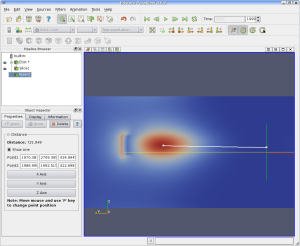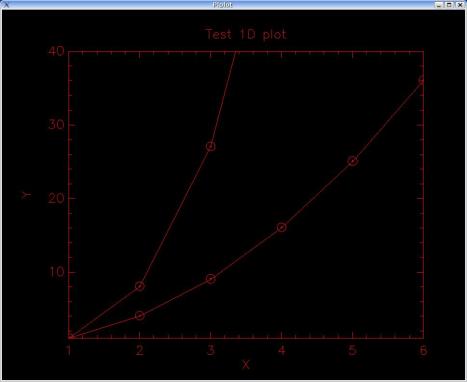I was looking for some function to save matlab array to VTK data format, and found just what I wanted in this page. They are shown below with some modification on my own:
Scalar data:
function savevtk(array, filename)
% savevtk Save a 3-D scalar array in VTK format.
% savevtk(array, filename) saves a 3-D array of any size to
% filename in VTK format.
[nx, ny, nz] = size(array);
fid = fopen(filename, 'wt');
fprintf(fid, '# vtk DataFile Version 2.0\n');
fprintf(fid, 'Comment goes here\n');
fprintf(fid, 'ASCII\n');
fprintf(fid, '\n');
fprintf(fid, 'DATASET STRUCTURED_POINTS\n');
fprintf(fid, 'DIMENSIONS %d %d %d\n', nx, ny, nz);
fprintf(fid, '\n');
fprintf(fid, 'ORIGIN 0.000 0.000 0.000\n');
fprintf(fid, 'SPACING 1.000 1.000 1.000\n');
fprintf(fid, '\n');
fprintf(fid, 'POINT_DATA %d\n', nx*ny*nz);
fprintf(fid, 'SCALARS scalars double\n');
fprintf(fid, 'LOOKUP_TABLE default\n');
fprintf(fid, '\n');
for a=1:nz
for b=1:ny
for c=1:nx
fprintf(fid, '%d ', array(c,b,a));
end
fprintf(fid, '\n');
end
end
fclose(fid);
return
Vector data:
function savevtkvector(X, Y, Z, filename)
% savevtkvector Save a 3-D vector array in VTK format
% savevtkvector(X,Y,Z,filename) saves a 3-D vector of any size to
% filename in VTK format. X, Y and Z should be arrays of the same
% size, each storing speeds in the a single Cartesian directions.
if ((size(X) ~= size(Y)) | (size(X) ~= size(Z)))
fprint('Error: velocity arrays of unequal size\n'); return;
end
[nx, ny, nz] = size(X);
fid = fopen(filename, 'wt');
fprintf(fid, '# vtk DataFile Version 2.0\n');
fprintf(fid, 'Comment goes here\n');
fprintf(fid, 'ASCII\n');
fprintf(fid, '\n');
fprintf(fid, 'DATASET STRUCTURED_POINTS\n');
fprintf(fid, 'DIMENSIONS %d %d %d\n', nx, ny, nz);
fprintf(fid, '\n');
fprintf(fid, 'ORIGIN 0.000 0.000 0.000\n');
fprintf(fid, 'SPACING 1.000 1.000 1.000\n');
fprintf(fid, '\n');
fprintf(fid, 'POINT_DATA %d\n', nx*ny*nz);
fprintf(fid, 'VECTORS vectors double\n');
fprintf(fid, '\n');
for a=1:nz
for b=1:ny
for c=1:nx
fprintf(fid, '%f ', X(c,b,a));
fprintf(fid, '%f ', Y(c,b,a));
fprintf(fid, '%f ', Z(c,b,a));
end
fprintf(fid, '\n');
end
end
fclose(fid);
return
Filed under: Uncategorized | Tagged: matlab, visualization | 5 Comments »






